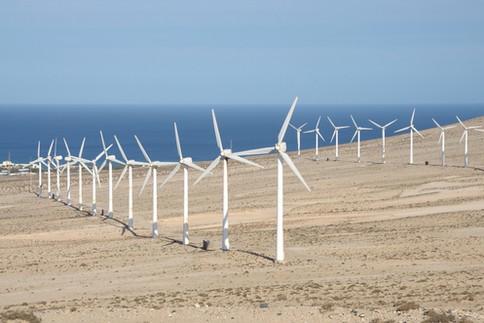A new handbook shows how forward-looking communities around the world are already moving away from reliance on fossil fuels and generating their own power with 100 per cent renewables − while also becoming more prosperous and creating jobs.
The report, How to Achieve 100% Renewable Energy, is released on Saturday, ahead of the UN Climate Summit in New York next Tuesday (September 23), when the UN Secretary-general, Ban Ki-Moon, will call on world leaders to make new commitments to cut fossil fuel use.
The World Future Council, based in Hamburg, Germany, has issued the report to show that it is only lack of political will that is preventing the world switching away from fossil fuels. It believes that the leaders at the UN summit need to set ambitious targets and timetables to achieve the switch to renewables.
Technologies exist
Using case histories − from small islands in the Canaries to great commercial cities such as Frankfurt in Germany and Sydney in Australia − the report makes clear that the technologies to go 100 per cent renewable exist already.
In many cases, the switch has the combined effect of saving money for the community concerned and creating jobs, making everyone more prosperous. In all cases, improvements in energy efficiency are essential to meeting targets.
“
We are on the verge of a profound and urgently necessary shift in the way we produce and use energy
Jeremy Leggett, a pioneer of solar power
Where the100 per cent renewable target is adopted, it gives the clearest signal to business that investments in clean tec
There is no case made for nuclear power. Indeed, the report says that the uranium needed for nuclear fuel is − like coal, oil and gas − a finite resource that will soon be running out.
One of the case histories in the report is the Fukushima Prefecture in Japan. In March 2011, it sustained the world’s worst nuclear accident since the 1986 Chernobyl disaster in Ukraine, and has now opted to go for 100% electricity from renewables by 2040.
Some of the 100 per cent renewable targets detailed in the report are just for electricity production. The authors − Toby Couture, founder of the Berlin-based energy consultancy E3 Analytics, and Anna Leidreiter, climate and energy policy officer at the World Future Council − point out that heating and cooling, and particularly transport, without fossil fuels is far more challenging, but still equally possible. Some countries are already committed to it.
Denmark, a pioneer in the field, has a target of achieving all its electricity and heating needs from renewables by 2035, and all energy sectors − including transport − by 2050. This includes an expansion of wind and solar power, biogas, ground source heat pumps, and wood-based biomass. Because of its investments, the country expects to have saved €920 million on energy costs by 2020.
At the opposite end of the scale, El Hierro, a small island in the Canaries, has a 100% energy strategy, using a wind farm and a volcanic crater. When excess electricity is produced by the wind farm, water is pumped into the volcanic crater, which acts as a storage lake for a hydroelectric plant. This supplements the island’s electricity supply when the wind drops or when demand is very high.
A future component of El Hierro’s strategy is to replace the island’s entire stock of 4,500 cars with electric vehicles, so cutting the need to import fuel.
Surplus electricity
Some places have already exceeded 100 per cent electricity from renewables. The Rhein-Hunsruck district west of Frankfurt, Germany, managed this in 2012, and expects by the end of this year to be producing 230 per cent of its needs, exporting the surplus to neighbouring areas through the national grid. It hopes to use the surplus in future for local transportation, hydrogen or methane production.
There are many other examples in the report, including from San Francisco in the US, Cape Verde island in West Africa, Bangladesh, Costa Rica, and Tuvalu island in the Pacific. These show that both rich and poor communities can share the benefits of the renewable revolution – and, in the case of the 3 billion people still without electric power in the world, bypass the need for fossil fuels altogether.
Jeremy Leggett, a pioneer of solar power and author of a foreword to the report, says: “We are on the verge of a profound and urgently necessary shift in the way we produce and use energy.
“This shift will move the world away from the consumption of fossil resources towards cleaner, renewable forms of power. Renewable energy technologies are blowing the whistle on oil dependency and will spark an economic and social renaissance.
“The question is: Do we make this transition from fossil resources to renewables on our own terms, in ways that maximise the benefits to us today and to future generations, or do we turn our heads away and suffer the economic and social shocks that rising prices and market volatility will create?”

